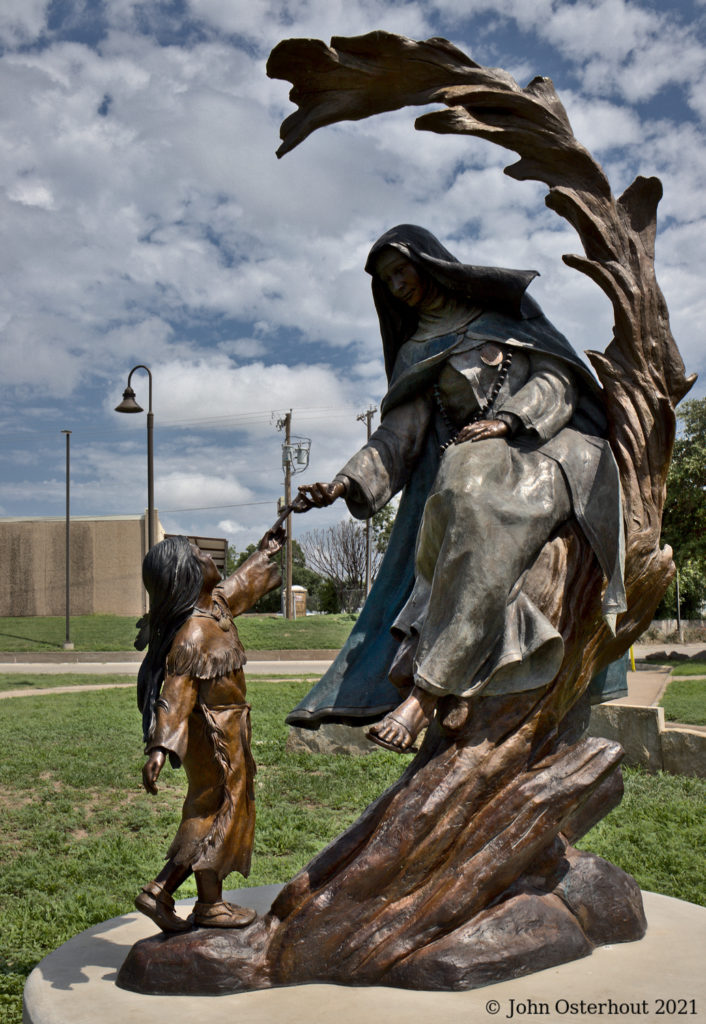
The Lady In Blue is Sister Maria de Jesus of Agreda, a Catholic nun who lived in Spain in the seventeenth century. She is known for bilocation between the Monastery of the Immaculate Conception of Agreda and the American west, where she ministered to the Jumano Indians of Central New Mexico, West Texas, and Tuscon. Although she never physically left her monastery, Maria reported that she was transported by the angels to the Jumano settlements. She was known as the Lady in Blue because of the blue habit of her order. I’ll provide some links at the end to Maria’s history and to the history of the statues. Mostly, I’m interested in the photography.
One of the problems with photographing the “front” of the Lady in Blue statue is that you wind up with a messy background. The Lady in Blue statue and another statue of a Jumano Indian are located in Bart DeWitt Park along the Concho River near downtown San Angelo. As you can see from the Lady in Blue photo above, if you photograph the side shown, which shows the Indian girl and Maria’s face, then you get a background full of parking lot, the butt end of some commercial buildings, and various light and utility poles. When I shot this, I was visiting with friends, so call this a snapshot. I want to go back at a time with better light and try to find an angle that misses most of the poles in the background. In the meantime, onward!
Jumano Indian
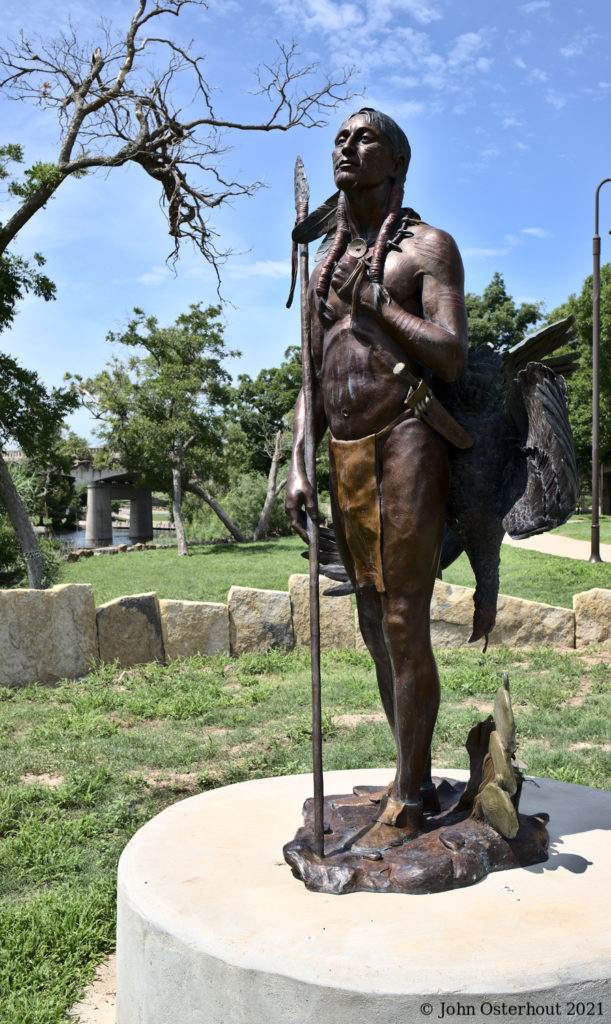
Here is a statue of a Jumano Indian situated about twenty yards away from the Lady in Blue statue. The Jumano is much better situated to provide a nice photographic background as can be seen from the photo. So we have the very famous Lady in Blue and an unknown Indian. What’s up with that?
Well, the motivation for the statues comes from the Historic Beginnings of San Angelo committee. The committee is interested in the Lady in Blue because of the San Angelo connection. They are interested to the extent that they organized a trip to Italy to see the Pope about beautification (elevation to sainthood) for the Lady in Blue. So when the committee proposed the Lady in Blue sculpture, the city worried that it would be perceived as being more religious than historical (duh). So we get the Jumano Indian to round out the historical aspect. The city council was still worried1, but went ahead with the proposal anyway. The ultimate plan is to surround the statures with an eight-foot-high wall and landscape the area heavily. This might help with the background problems.
What follows is the real point of this post, which is some black and white photos I took of the Lady in Blue statue back in 2020.
The Lady in Blue
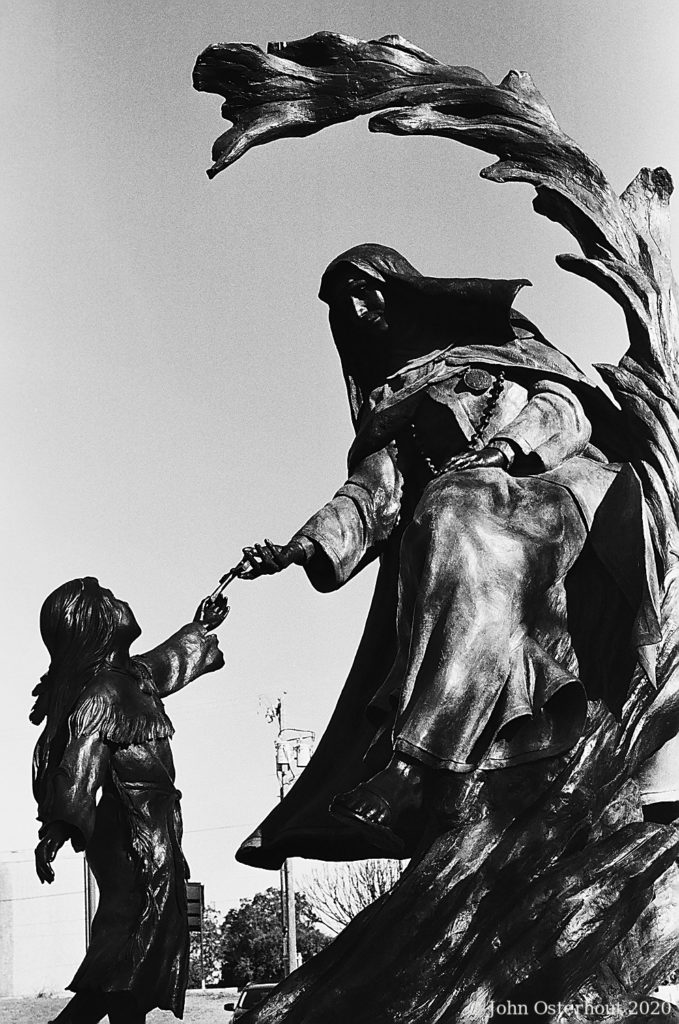
Here is a frontal shot of the Lady in Blue stature showing the basic relationship of the figures and the cross being handed over. Since I was shooting Tri-X on a bright Texas day I couldn’t open up the lens much to narrow the depth of field and blur the background, so you get a nice, sharp view of the utility pole complete with transformers. Someday, I’ll crack this nut.
The Lady
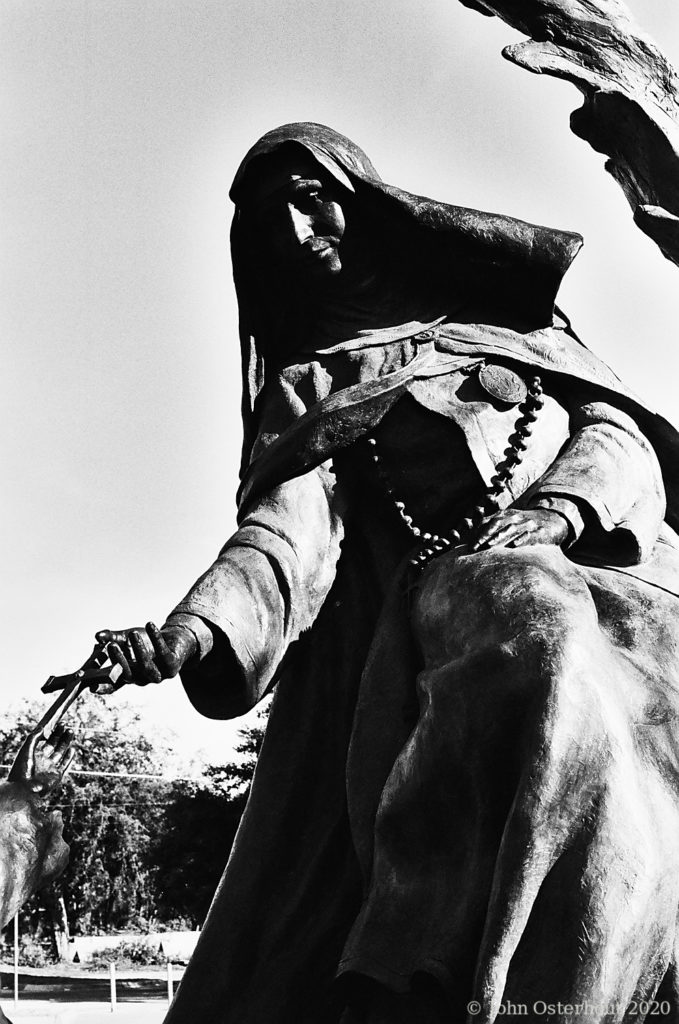
Here’s a shot of just the Lady. You can see a bit of the tree she is sitting on peeking out above her head and the cross she is handing to the Indian girl.
Headshot
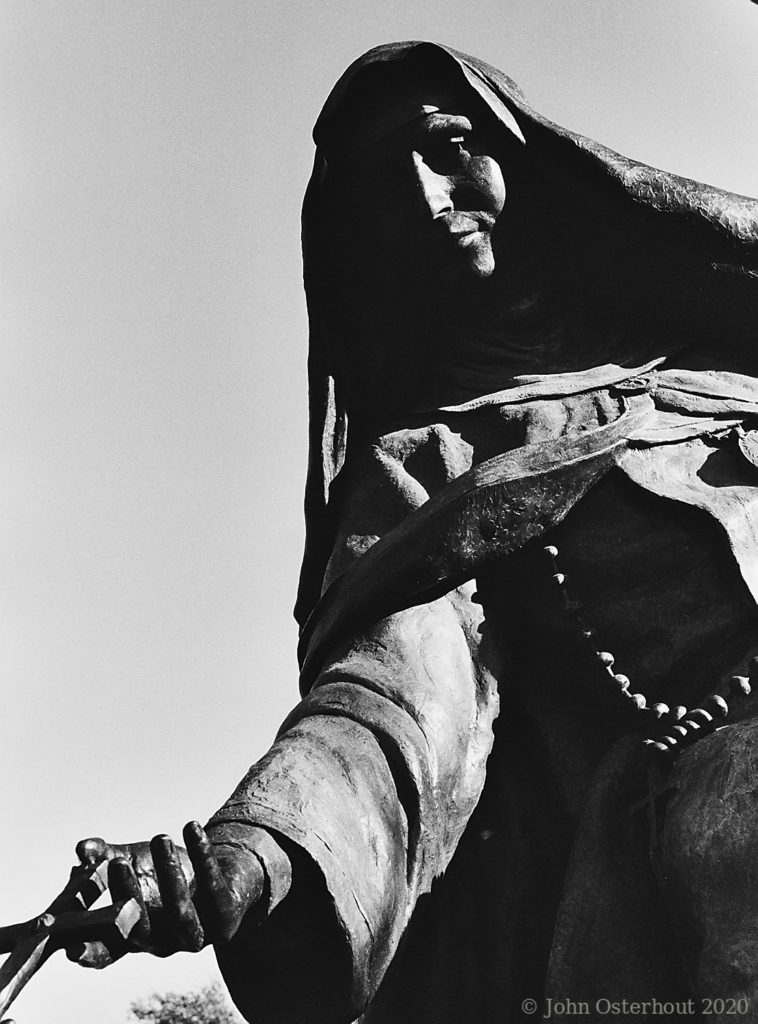
Here she is cropped a little tighter. I’ve shot her without her tree overhang here.
Lady in Blue Face
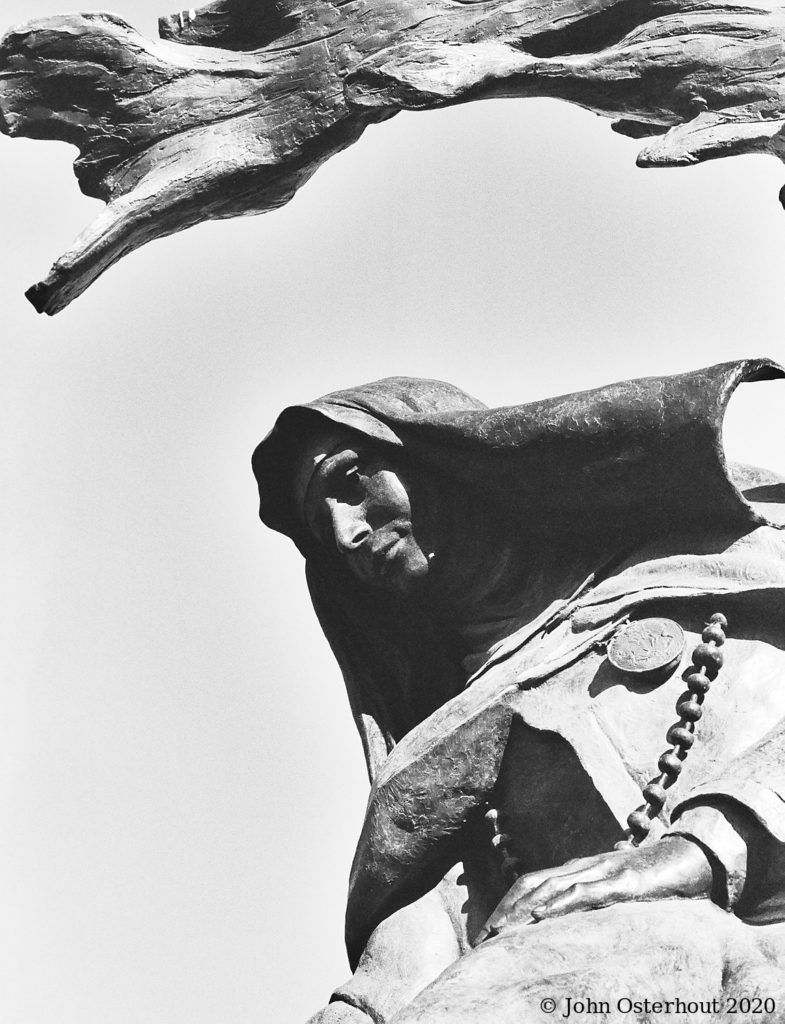
This shot gives a better view of her face. The tree soaring above lends a little drama here.
The Cross
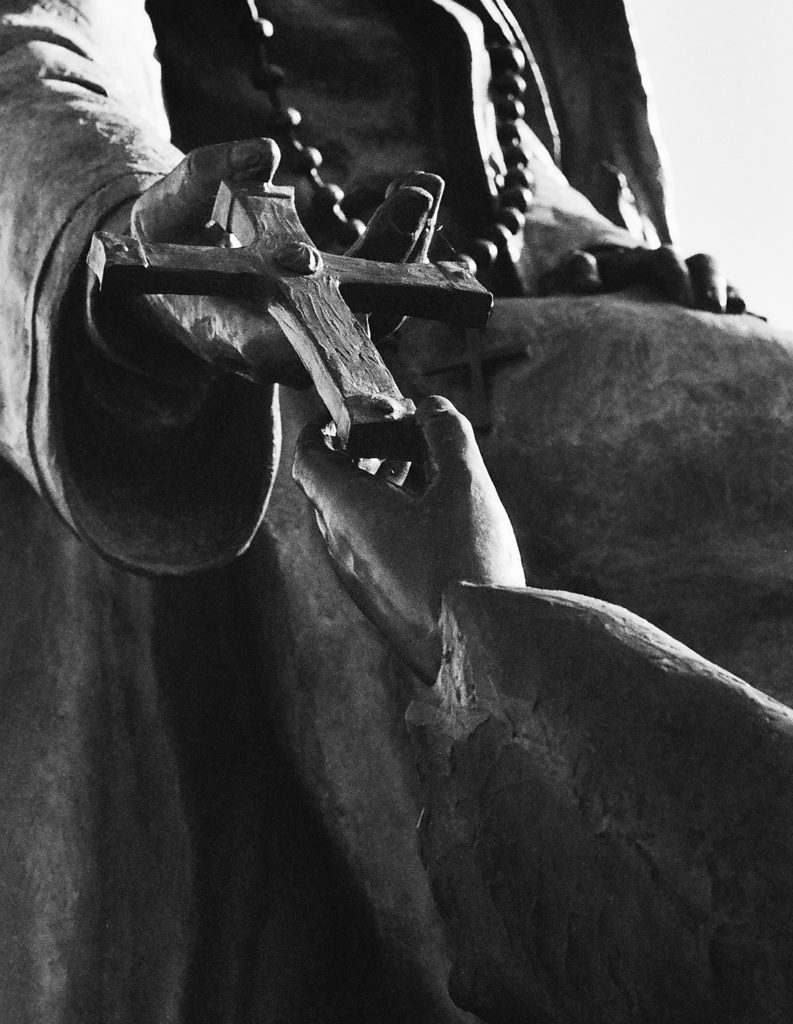
The hands and cross. I was going for a bit of drama in the closeup.
1City Council Debates Location Issues for New Sculptures, SanAngeloLIVE.com.
Further Reading for the Lady in Blue
Mary of Jesus of Ágreda (Wikipedia)
The Lady in Blue, Mariadeagreda.org
Day Trips: The Lady in Blue, San Angelo, The Austin Chronicle
The Legend of the Lady in Blue, The Texas Standard
The Lady in Blue, Texas Almanac
The two color photographs were taken with a Canon 6DII wearing the Canon EF 35mm f/2 IS USM. I was using a three lens kit that day consisting of Canon lenses of focal lengths, 100mm, 50mm, and 35mm. The black and white photos were taken with a Leica M3 wearing a Zeiss 50mm f/2 Planar T* ZM and loaded with Tri-X. The 50mm Zeiss was the only M mount lens I owned at the time. The film was processed and scanned by Holland Photo Imaging in Austin, Texas. All photos were digitally processed with darktable.